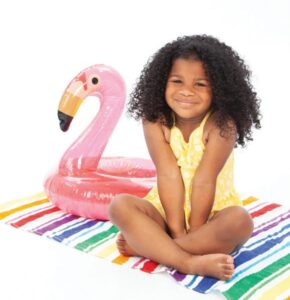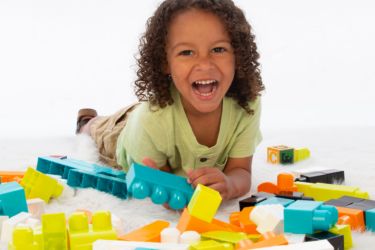
Water Safety for Families: 4 Ways to Prevent Drownings
Did you know that drowning is the fifth leading cause of unintentional death in the United States? There are about 4,000 drowning incidents per year, two-thirds of which happen in the months of May-August, and one in five people who die by drowning are aged 14 or younger.
Contrary to popular belief, drowning is silent and quick, leaving about only a minute for you to save the victim once he or she starts struggling. It’s definitely scary to think about, and it’s serious. However, with proper training and safety measures, you can have some peace of mind for you and your family this summer when your child cannonballs into the pool.
SWIMMING SKILLS
The first step is to teach your children how to swim. There’s no specific age in which you have to enroll a child in swim lessons, as some kids may not be as ready as other kids the same age, but children can enroll in swim lessons as early as a few months old. The classes for infants will not be intense, but they will get them conditioned to having water in their face.
SUPERVISING SWIMMERS
Swim lessons are only the first line of defense, though. Forty-seven percent of drowning incidents occur in children ages 10-17 who have already taken swim lessons in the past, so it’s crucial that parents are watching their children when they are playing in any body of water, regardless of how shallow the water is.
When you take your child to the pool, don’t get too comfortable on the lounge chair with your food, drink, and book. “Supervision is the biggest barrier you can set up between your kids and drowning,” says Kayla Dysart, head director of the swim school at Crawfish Aquatics. “The majority of drownings happen when both parents are there, so you need to set up a designated water watcher that switches out every 15-20 minutes so no one gets distracted or fatigued when watching.” If your child is an inexperienced swimmer, it is a good idea to stay within reach of him or her in case of an emergency.
FLOATIE FUNDAMENTALS
A lifeguard’s primary concern is not to watch your child, only to enforce rules, survey, and resuscitate if needed. It’s important to start teaching them when young and without flotation devices, so your child can learn his or her own boundaries in the water, as floaties offer false security.
Often, children who swim with floaties will jump in the water without them and will start struggling immediately because they do not know how to float on their own. Limiting their dependency on floatation devices in the pool and teaching them how to float on their back will help them learn how to save themselves in the event they start to drown.
However, you should not overlook life vests, which your child needs to wear if you go boating this summer. Lifeguards will not always be nearby because drowning incidents are not exclusive to pools. Rivers, lakes, and even bathtubs can be dangerous for unsupervised children. While life vests should not be worn in pools, you do need them for other water activities. Make sure they are up-to-date and certified before using them.
RESCUE SKILLS AND RULES
Since you won’t find a lifeguard at your family’s favorite river or lake spot, you need to be familiar with basic rescue skills such as CPR, and there are a few other things families should teach their children. There are CPR and first-aid online and in-person courses, some of which are non-certifying but are still excellent sources to learn from, and some of which can even be found on YouTube.
Work with your child on floating on his back so he will know how to do so, and call for help if needed. Establish rules before everyone gets in the water, and do a quick skills test, especially if you are watching other children.
Children also need to learn five important water survival skills: 1) step or jump into water over your head, 2) come back to the surface and tread in the water for one minute 3) make a circle and find an exit from the water 4) swim 25 yards to get out the water 5) exit the water (and make sure you know how to get out without using a ladder).
Your child needs to understand that swimming in open water is different from swimming in a pool, as he needs to be aware of river currents, rip tides, ocean undertow, changing weather, sunken logs, and uneven surfaces. If you take him out to the docks this summer, you also need to make sure the electrical units are safe and that there are no ungrounded electrical components that could shock someone.
At home, dump out any container in your yard that is full of water, and leave the container upside down so it does not refill next time it rains.
It will be easy to lower the number of drowning incidents this year if all parents are vigilant and take responsibility for their child’s safety in and around water. This can be accomplished with basic education for your child and yourself, so you do not have to worry when they go for a dip. With the proper precautions, you and your family are sure to have good and safe fun in the pool, on the boat, or at the river.
SIGNS OF DRY DROWNING AND SECONDARY DROWNINGS
When it comes to preventing drownings, we are all aware of the steps we must take as parents in order to keep our little ones safe and sound while in the water. However, when our little ones are outside of the water, many parents have also become familiar with the terms dry drowning or secondary drowning.
According to Pediatrics, the official journal of the American Academy of Pediatrics, dry drowning and secondary drowning are not medically-accurate terms. However, these “submersion injuries” and delayed respiratory impairments can be prevented and do show early warning signs, if you know what you should be looking for.
If you think your child is experiencing issues once out of the water, be on the lookout for:
■ Coughing
■ Increased work of breathing
■ Sleepiness
■ Forgetfulness or changes in their behavior
■ Vomiting
Many of the same steps to help prevent these from occurring mirror the ways we help prevent drownings, including watching your child while he is in the water, swimming with a lifeguard on duty, and enrolling in water safety classes.
If you or your child is experiencing any of the above symptoms, always reach out for help immediately. If you have more questions about how to protect your child while in and out of the water, talk with your child’s pediatrician.





